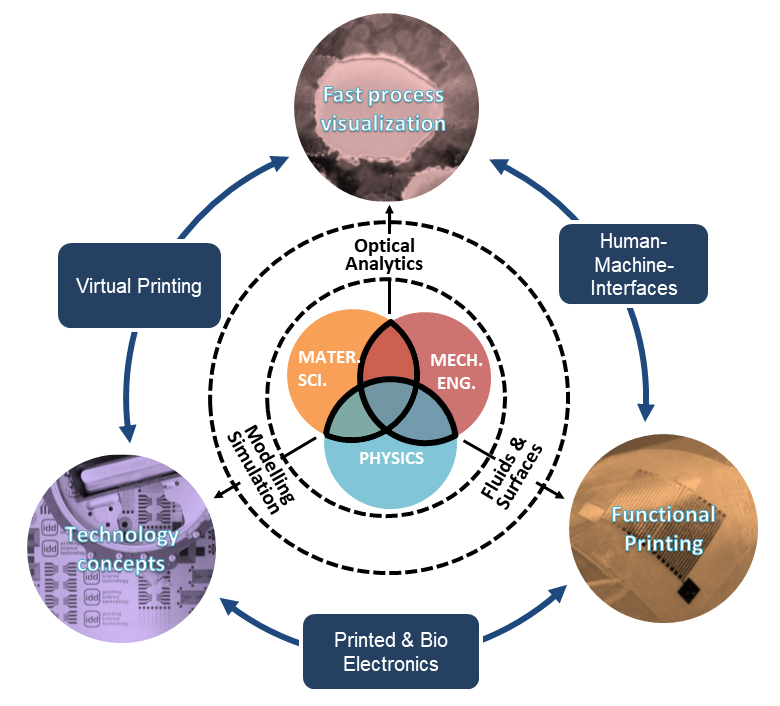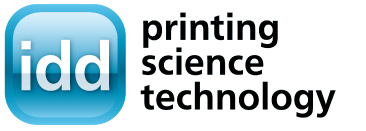Learn more about our Printing Fluids and Interfaces group and our technologies, research and applications.
Printing research visualizes, analyses and develops transport processes of fluid media on interfaces. We are using powerful optical imaging technologies from interferometry to high speed video recording to study the transfer of materials between surfaces, and to make its partly very complex dynamics transparent.
We develop models of fluid splitting, wetting, and drying, and implement simulations of coupled mechanical, hydrodynamical and thermal processes.
Our printing lab disposes of a wide variety of characterization tools for fluids and surfaces, for the installation and analysis of printing experiments. Our particular know how is the design of novel measurement and printing technologies.
As print researchers our scientific work is devoted to surfaces at speed. We study the dynamics of simple and complex fluids, and their interaction with structured surfaces and with gases on time scales down to 10 microseconds. Fast wetting, liquid jets and filaments, phase separation in thin liquid films under extreme mechanical shear. In almost each case physical processes an the macroscopic and the mesoscopic length scale are entangled. Liquid flow, molecular ordering at liquid interfaces, capillarity of structured surfaces, gas phase effects, spontaneous pattern formation, dynamic instabilities. We have access to the critical, and physically extremely challenging interfaces in the printing nip between the rotating printing cylinder and the moving substrate, as well as to the gliding doctor blade, the locations where unique innovation takes place for printing, and for being discovered by the our students, and mechanical engineers.
The tradition of printing art is a unique treasure even for contemporary research and process development. However, this knowledge is an empirical one, and it must be scientifically substantiated in order to furnish surfaces with features and function which are demanded for in society and industrial production of the future.
Surfaces are the indispensable physical interfaces of perception and of information exchange between human beings and the digital world. Consequently, they not purely physical entities, but serve the contact with our natural human senses: mechanical, haptic, and chemical sensors, luminant and passive displays. We use concepts and technologies from printed electronics, but also consider the protection, finishing and structuring of printed products. We do more than the development of adequate printing technologies for water-based and biological materials. We make printing transparent, understandable, predictable, and useful for the challenging aims of our partners in research and industry.





